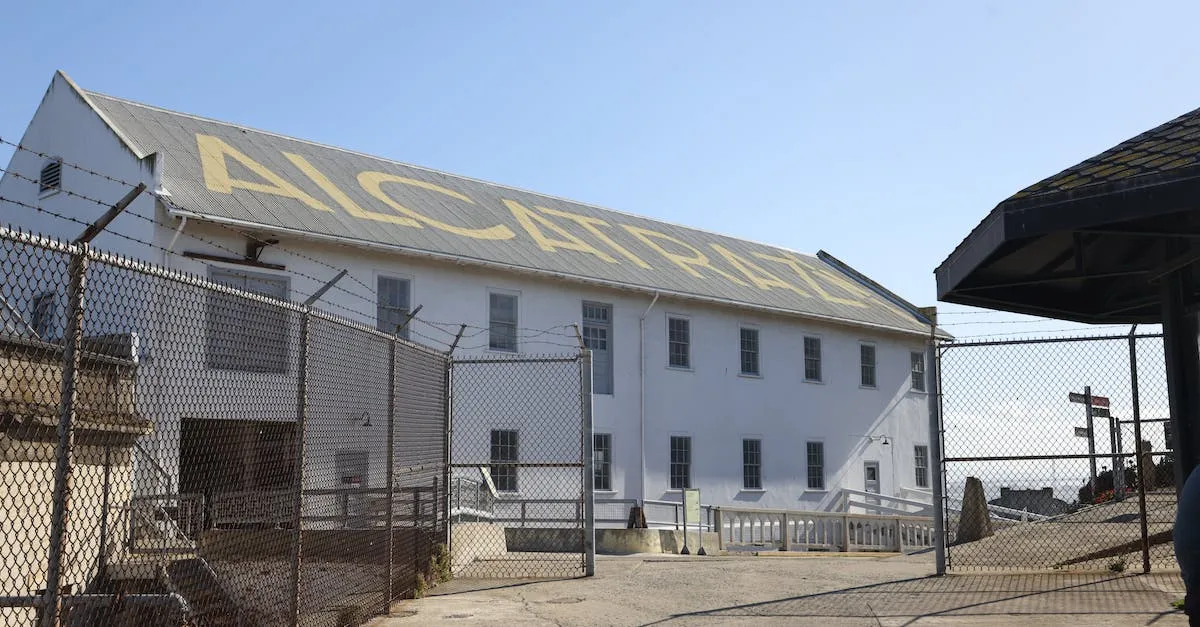An Overview Of Sny Prisons In California
California operates one of the largest prison systems in the United States, with over 100 facilities holding nearly 120,000 inmates across security levels and custody designations. Among these facilities are several designated SNY prisons and units for inmates seeking protection from the general population.
If you’re short on time, here’s a quick answer: California has dedicated Sensitive Needs Yards (SNYs) at prisons like California State Prison, Sacramento and California Men’s Colony for vulnerable inmates who cannot safely stay in the general population.
In this comprehensive guide, we’ll provide an in-depth look at the purpose of SNY prisons, their growth in California, the criteria for placement, daily life inside SNY units, profiles of major SNY facilities in the state, and the debates surrounding these segregated yard designs.
Understanding SNY Prisons and Units
SNY, which stands for Sensitive Needs Yard, is a classification system used in California prisons to house inmates who have safety concerns or certain vulnerabilities. In SNY prisons, inmates are separated from the general population and placed in specialized housing units.
This article will provide an overview of SNY prisons in California, shedding light on the reasons for SNY classification and the growth of SNYs in the state.
Defining SNY
SNY prisons are designed to provide a safer environment for inmates who may be at risk in the general population. Inmates who are placed in SNY units are typically those who have been victims of violence, have gang affiliations, or have cooperated with law enforcement.
SNY prisons offer increased security measures, such as stricter monitoring and limited interaction with other inmates.
It’s important to note that not all inmates in SNY units are there by choice. Some inmates may be transferred to SNY prisons involuntarily due to safety concerns, while others may request the transfer themselves.
In some cases, inmates may be placed in SNY units temporarily until their safety concerns are addressed or until they can be reintegrated into the general population.
Reasons for SNY Classification
There are various reasons why an inmate may be classified as SNY. One of the main reasons is for protection against violence. Inmates who have been targeted for violence by other inmates or gangs may request SNY classification to ensure their safety.
Additionally, inmates who have cooperated with law enforcement as informants or witnesses may also be placed in SNY units to protect them from retaliation.
Another reason for SNY classification is gang affiliations. In SNY prisons, inmates with gang affiliations are separated from the general population to reduce the risk of gang-related violence or conflicts.
By segregating these inmates, SNY prisons aim to create a safer environment for all inmates and staff.
Growth of SNYs in California
The number of SNY prisons and units in California has seen significant growth in recent years. This increase can be attributed to several factors, including changes in California’s prison system and the need for enhanced safety measures.
As the inmate population continues to evolve, the California Department of Corrections and Rehabilitation has adapted to address the unique needs and challenges of different inmate groups.
It’s worth mentioning that the growth of SNYs has sparked debates and discussions about the effectiveness and fairness of this classification system. Critics argue that SNY classification can be abused by inmates who want to avoid the general population or exploit the system for personal gain.
Proponents, on the other hand, argue that SNY units serve a vital role in maintaining safety and security within the prison system, protecting vulnerable inmates and reducing violence.
For more information on SNY prisons in California, you can visit the official website of the California Department of Corrections and Rehabilitation: https://www.cdcr.ca.gov/.
SNY Admission and Criteria in California Prisons
When it comes to the admission and criteria for Special Needs Yard (SNY) prisons in California, there are several factors that determine an inmate’s eligibility. Understanding these criteria is essential for those seeking information about SNY prisons.
Voluntary vs Involuntary
SNY prisons in California admit both voluntary and involuntary inmates. Voluntary admission occurs when an inmate requests to be placed in the SNY due to concerns for their safety in the general population.
In contrast, involuntary admission is determined by prison officials who may transfer an inmate to the SNY based on various factors, such as gang affiliations or threats to their safety.
Medical Conditions
One of the main criteria for admission to an SNY prison in California is an inmate’s medical condition. SNYs are designed to provide a safer environment for inmates who have medical issues or disabilities that require special care.
These can range from physical disabilities to mental health conditions. Inmates with medical conditions that require specialized treatment or accommodations may be considered for transfer to an SNY.
LGBTQ Status
Another important factor in SNY admission in California is an inmate’s LGBTQ status. LGBTQ inmates often face unique challenges and safety concerns in the general population. SNY prisons strive to provide a safer environment for LGBTQ inmates, protecting them from harassment or violence based on their sexual orientation or gender identity.
Informants and Cooperation
SNY prisons in California also house inmates who have chosen to cooperate with law enforcement or prison authorities as informants. These inmates may have provided valuable information that led to the conviction of other inmates or disrupted criminal activities within the prison system.
To ensure their safety, these informants are often transferred to SNYs, where they can be kept separate from the general population and continue to assist law enforcement.
It’s important to note that the specific criteria for SNY admission may vary from one prison to another in California. Each case is evaluated individually, considering the safety and well-being of the inmate, as well as the overall security of the prison facility.
For more detailed information on SNY admission and criteria in California prisons, you can visit the official website of the California Department of Corrections and Rehabilitation at www.cdcr.ca.gov.
Daily Life in a California SNY
Life in a California Security Needs Yard (SNY) prison differs in several ways from that in a General Population (GP) prison. SNYs are designated for inmates who require protection from other prisoners due to gang affiliation, cooperation with authorities, or other safety concerns.
While the environment may be different, daily life in a California SNY still involves routines and activities that aim to promote rehabilitation and facilitate personal growth.
Housing and Units
In a California SNY, inmates are housed in separate units from those in the GP. This segregation helps to maintain security and reduce the risk of violence. The living conditions in SNY housing units are generally similar to those in GP units, with individual cells or dormitory-style housing depending on the facility.
Inmates are provided with basic necessities such as bedding, toiletries, and clothing.
Work Assignments
In a California SNY, inmates have the opportunity to participate in various work assignments. These assignments can range from traditional prison jobs such as kitchen or janitorial work to vocational programs that provide training in areas like carpentry, landscaping, or computer skills.
Engaging in meaningful work helps inmates develop job skills, gain a sense of purpose, and prepare for reintegration into society upon release.
Yard Time
Just like in a GP prison, inmates in a California SNY are provided with regular yard time. This allows them to engage in outdoor recreational activities, such as exercise, sports, or socializing with other inmates.
Yard time is an essential part of prison life as it helps inmates maintain physical and mental well-being. It also provides an opportunity for social interaction and building healthy relationships.
Programs and Education
SNY prisons in California offer a range of programs and educational opportunities to inmates. These may include substance abuse counseling, anger management classes, vocational training, and academic courses.
Participating in these programs not only helps inmates address the underlying issues that may have contributed to their incarceration but also equips them with the skills and knowledge necessary for a successful reentry into society.
Inmates who participate in education and rehabilitation programs have a higher chance of breaking the cycle of crime and leading productive lives after their release.
For more information on daily life in a California SNY, you can visit the official website of the California Department of Corrections and Rehabilitation: https://www.cdcr.ca.gov/.
Major SNY Facilities in California
Sacramento
Sacramento State Prison, located in Folsom, California, is one of the major SNY (Sensitive Needs Yard) facilities in the state. It houses inmates who have been placed in protective custody due to their vulnerability or affiliation with a gang.
The prison provides a secure environment for these individuals, ensuring their safety while serving their sentences.
According to statistics from the California Department of Corrections and Rehabilitation, Sacramento State Prison has a capacity of over 3,000 inmates. It offers various programs and services aimed at rehabilitation, including educational opportunities, vocational training, and substance abuse treatment.
Corcoran
Corcoran State Prison, located in Kings County, California, is another significant SNY facility in the state. It is known for its high-security measures and houses inmates who have been classified as sensitive needs or high-risk individuals.
The prison provides a structured and controlled environment to ensure the safety of both inmates and staff.
Corcoran State Prison has a capacity of approximately 3,900 inmates and offers a range of programs to aid in the rehabilitation process. These include mental health services, substance abuse treatment, and vocational training.
The prison also has a reputation for its agricultural programs, allowing inmates to gain valuable skills and contribute to the prison’s self-sufficiency.
California Men’s Colony
The California Men’s Colony, located in San Luis Obispo County, is a significant SNY facility that primarily houses male inmates. It provides a safe environment for inmates who may be at risk in a general population setting.
The prison offers various programs aimed at rehabilitation, including educational opportunities, vocational training, and counseling services.
With a capacity of over 5,300 inmates, the California Men’s Colony is one of the largest SNY facilities in California. It emphasizes the importance of preparing inmates for successful reintegration into society, focusing on reducing recidivism rates through education and skill-building.
Others
In addition to the aforementioned facilities, there are several other SNY prisons in California that play a crucial role in the state’s correctional system. These include facilities such as Avenal State Prison, Salinas Valley State Prison, and Chuckawalla Valley State Prison.
Each of these facilities follows strict protocols and guidelines to ensure the safety and well-being of inmates. They provide a range of programs and services aimed at rehabilitation and preparing inmates for a successful transition back into society.
Debates and Controversies Surrounding SNYs
Costs
One of the main debates surrounding SNY prisons in California is the costs associated with housing inmates in these facilities. Critics argue that SNY inmates receive certain privileges, such as single cells or reduced sentences, that traditional general population inmates do not.
This has led to concerns that the state is spending more money on SNY prisoners, potentially at the expense of other areas of the correctional system.
Incentivizing Informants
Another controversial aspect of SNY prisons is the practice of incentivizing informants. In these facilities, inmates who provide information about gang activities or other illegal behaviors can receive benefits, such as protection or reduced sentences.
While this practice can be seen as a way to gather valuable intelligence and maintain safety within the prison, critics argue that it creates an environment where inmates are encouraged to provide false or exaggerated information in order to gain personal advantages.
Safety and Violence
Safety and violence are also areas of concern when it comes to SNY prisons. SNY inmates are often labeled as “rats” or “snitches” due to their decision to leave the general population and join the protective custody of SNYs.
This can lead to tensions and potential conflicts between SNY inmates and those in the general population. Additionally, there have been instances where SNY inmates have been targeted for violence by other inmates, as they are seen as vulnerable and easy targets.
The controversies surrounding SNY prisons highlight the complexities and challenges of managing prison populations. While SNYs may provide a level of protection for certain inmates, they also raise questions about fairness, costs, and potential risks within the correctional system.
Conclusion
In conclusion, SNY units and facilities have become an established part of California’s prison system as it aims to safely house vulnerable and at-risk inmates. While SNYs remain controversial, they will likely continue serving a major role given California’s large prison population.
SNY inmates experience significant differences in daily life and cultural dynamics than mainline prisoners. Understanding the purpose, growth, criteria, conditions, and debates around SNYs provides critical insight into a unique segment of California’s corrections system.








